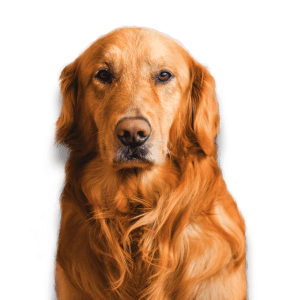
What is it?
Hypothyroidism is a condition, often called an “underactive thyroid”, in which the thyroid gland (in the dog’s neck) doesn’t make enough thyroid hormone. Thyroid hormone, also known as thyroxine, is responsible for controlling the dog’s metabolic rate - how fast their cells burn energy. Dogs with low thyroid hormone levels cannot process energy fast enough, so tend to be slow and sleepy all the time.Why is it important?
There are four types of hypothyroidism seen in dogs, with a variety of causes.
Primary Hypothyroidismoccurs when the thyroid gland stops working - this may be because the dog’s immune system accidentally attacks it (“Lymphocytic Thyroiditis”) or because active gland tissue is replaced with fat “Thyroid Atrophy”). Together, these two types of Primary Hypothyroidism account for 95% of all cases.
Secondary Hypothyroidismoccurs when their thyroid gland is healthy, but the signals from the brain aren’t sent, and is quite rare.
The final type is Congenital Hypothyroidism, which is an inherited disorder; it is rare and is seen mostly in Fox Terriers and related breeds.
What is the risk?
This is a condition seen most commonly in middle aged to elderly dogs. In general, large breed dogs (such as Golden Retrievers, Irish Setters, Dobermans etc.) are at the highest risk. However, some small breeds (e.g. Dachshunds, Cocker Spaniels, Fox Terriers and Schnauzers) are also thought to be at a higher than average risk. Overall, about 0.4% of dogs will develop hypothyroidism at some time in their lives, making it one of the most common hormone disorders.What happens to the dog?
A dog with hypothyroidism is unable to process energy fast enough - they have an abnormally low metabolism. The symptoms reflect this, typically including lethargy and weight gain. In many cases there are also coat changes - hair loss along the flanks, a dull and dry or sometimes greasy coat, darkening of the skin, and recurrent skin infections. Another common symptom in undiagnosed hypothyroid dogs is a swollen face, often giving them a “tragic” expression. Occasionally, dogs may also develop other symptoms such as anaemia, irritated eyes (conjunctivitis), muscle weakness, altered heartbeats, and facial paralysis.How do you know what’s going on?
Hypothyroidism is usually straightforward to diagnose - a blood test for the amount of T4-thyroxine (the most common type) will show up low.
However, occasionally dogs will come back as normal on this test, but still show classical signs of hypothyroidism. In these cases, more sophisticated blood tests may be required, such Free T4 (that measures the amount of T4-thyroxine actually available in the blood to do its work), or blood TSH (Thyroid Stimulating Hormone) levels.
Simply trialling a dose of artificial thyroxine hormone isn’t usually a good test, because a wide range of conditions will temporarily improve if extra thyroxine is given!